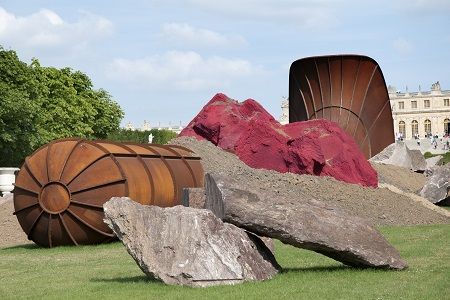Article
Collection Disposition: A Thorny Thought
Author(s):
Reverend Al Shands, 88 years old, knows exactly what he is going to do with his extensive contemporary art collection when he passes. He is giving it to the Speed Museum in Louisville, Kentucky, his hometown.

Artwork by Anish Kapoor, one of the artists that Reverend Al Shands collects.
Reverend Al Shands, 88 years old, knows exactly what he is going to do with his extensive contemporary art collection when he passes. He is giving it to the Speed Museum in Louisville, Kentucky, his hometown. To him, I suspect, this makes the burden of death easier. He knows where his beloved collection will be placed, admired, and cherished.
Not every collector is able to be so decisive.
“I haven’t thought of what I am going to do with the collection,” a 70-something friend said to me. “To think about it means I’m mortal and I don’t want to face that.”
If my friend made no plans, he wouldn’t be alone. Many collectors have estates that end up in the hands of an executor without specific directions for the disposition of their collection. This lack of planning can sadly result in administrative expense and a collection that is dispersed out of line with the collector’s wishes.
But, there is a better way. It is taking positive action while alive to dispose of a collection during life or at death or both. There really are four choices:
1. Sell
2. Give to heirs
3. Donate
4. A combination of the above
Sell
Though selling sounds easy, it carries its own set of hitches. There is the trouble of packing and shipping, plus commissions and tax consequences; 28% rather than the 20% on capital gains. For the collector, dispersing the collection at death rather than when alive can circumvent some of these difficulties; for example, he doesn’t have to think about packing and shipping because someone else does. Additionally, the tax base is increased to fair market value at death. Though this may prevent the need to pay capital gains, the entire sold value is included in the estate for tax purposes.
Give to Heirs
Giving to heirs can begin to start before death because of the annual gift tax exclusion — now $14,000.00 per year. It can be used to gift entire or partial ownership for pieces in the collection. The lifetime exclusion is $5,250,000.00. At death, this distribution process can be continued so that heirs receive collectibles according to their value or their interest.
If the heirs want to keep the collection together at the death of the collector, formation of an LLC is an option. In this way, when art work is purchased or sold, members pay or receive monies according to their shares in the LLC. The LLC entity divorces legal from beneficial ownership. Thereby, feelings related to selling property with a personal connection are reduced.
Donate
Giving part or all of a collection to a non-profit institution while alive has distinct advantages. First, there is an income tax deduction of as much as 30% of adjusted gross income depending on the appraised value of the gift. Secondly, the donor can have a “feel good” moment which can be sustained if she is honored by the non-profit at an event — and thereby recognized by others for her generosity.
Another option is to give a gift over time. This is called a fractional donation and the donor is entitled to a tax deduction depending on the fraction given in any one year. An additional requirement is that the museum is able to physically have the piece of art in the museum for a period of time equivalent to the fractional ownership. For example, if 20% of a $500,000.00 piece of art work is given to a museum, the museum is permitted to show the art for 20% of the year. The donor receives an income tax deduction equivalent to 20% of the appraised value of the piece. The fractional ownership transfer must be completed in ten years according to current tax law.
On the other hand, if the collector waits until death to donate to a museum the process is easier. The pieces to be donated are delivered to the museum and the estate receives a tax deduction based on its valuation at death.
Combination
For many collectors, using all three disposition channels makes perfect sense. To give heirs objects that they chose as a remembrance, sell others for cash for a variety of reasons (including that they are not museum quality), and lastly to give the remaining to a museum or other non-profit. Then, the question is simply how to deaccess to the non-profit, during life or at death or both.
My take on all of this is that collections take work: acquiring, displaying, and finally disposing. To most collectors, the former two are satisfying. The last can be a thorny issue. Still, facing the inevitable can help make a second life for a collection above and beyond its owner, one that it would not otherwise have had.
This information and content is offered for educational purposes only by MyMoneyMD, LLC. MyMoneyMD, LLC is not acting as a Registered Investment Advisor, Investment Counsel, Tax Advisor, or Legal Advisor.




